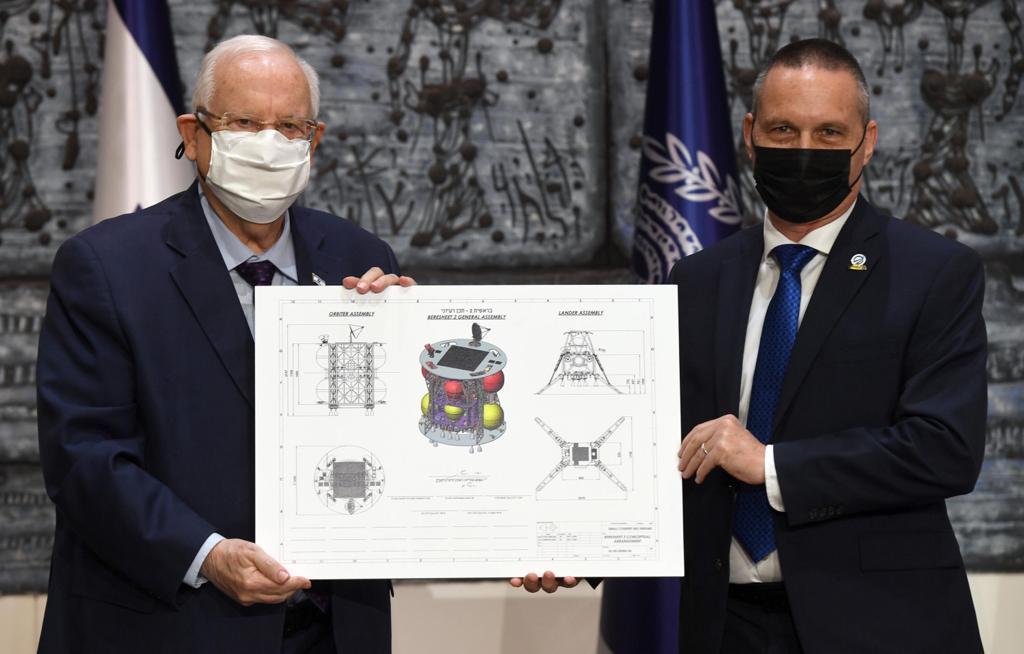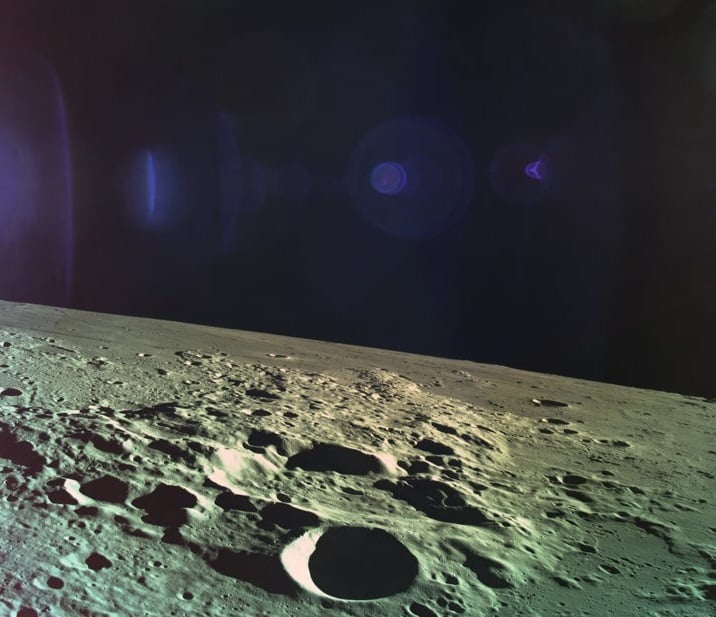Israel’s science and technology community has its eyes on the moon, again.
SpaceIL, in cooperation with Israel Aerospace Industries and the Israeli Space Agency at the Ministry of Science and Technology recently initiated the Beresheet 2 project, a follow-up space mission to the 2019 lunar mission of Israel’s first spacecraft.
The latest project hopes to put one orbiter and two landers on the lunar surface in 2024.
Beresheet 2 is designed as a system that actually consists of three spacecraft: one orbiting spacecraft, to which two spacecraft are attached. Once captured by the moon, the orbiting spacecraft will release the two spacecraft destined for landing on the moon, at different times, and at different landing sites. When each of them performs a different scientific task,” Kfir Damari, co-founder of SpaceIL, tells NoCamels.
SEE ALSO: SpaceIL Gets $1 Million Grant From Blavatnik Foundation For New Spacecraft, 2nd Moon Mission
“We are aiming high with Beresheet,” said SpaceIL CEO Shimon Sarid at the launch ceremony at the President’s Residence last week. “Not just to outer space, but to the long-term future of the State of Israel. We will do it by raising curiosity and hope, the ability to dream and realize and through strengthening technological education, research, science and engineering for Israeli students.

“By doing so, we will ensure Israel’s technological mobility for today’s schoolchildren who are tomorrow’s scientists and engineers,” he said.
Although the original Beresheet – the Hebrew word for “Genesis” — crashed into the lunar surface following engine malfunctions in 2019, it succeeded in its mission to ignite a new generation of engineers, innovators and dreamers to look toward outer space.
“Space IL is designed to create an educational and scientific inspiration for an entire generation of Israeli students, through challenging and exciting projects in outer space. The Bereshit project realized this mission in an extraordinary way, which can certainly be defined as the Israeli Apollo effect,” says Damari. “Based on these achievements, we decided to continue to amplify the Bereshit effect through a new, challenging and exciting program.”
“Just a year and a half ago, we were here together, when Israel held its breath and looked to the stars,” Israeli President Reuven (Ruvi) Rivlin said at the ceremony, which included the online participation of schoolchildren, students and volunteers from the six space centers around the country.
“We anxiously watched the Beresheet spacecraft on its historic journey to the moon. We watched its long journey, were in wonder at the researchers and were filled with pride at the Israeli daring and ability that flourished right here and at the groundbreaking work of Space IL. We were disappointed and realized that we had to start once again from the beginning. Today, we are setting out on a new path, familiar but different, at the end of which we hope to land three spacecraft safely on the moon,” said Rivlin.
The original mission was remarkable because almost everything about the unmanned spacecraft went against convention.
It began as a dream by three young engineers — Damari among them — and not a government program, making it the first privately funded space probe to shoot for the moon. It cost just $100 million to plan and develop, whereas other space missions in the past have run in the billions of dollars. The building of the spacecraft from full-scale development took just four years.
So, it makes sense, that the newest mission, Beresheet 2, intends to create a new standard and strive to put three devices on the Moon in just four years from now.
Whereas superpowers China, Russia, and the United States used to hold the keys to space, recent smaller missions like those of Israel, India and commercial space explorations are opening new frontiers.
“We are setting out on a new path, familiar but different, at the end of which we hope to land three spacecraft safely on the moon. This project will extend the boundaries of human knowledge with ground-breaking scientific experiments, helping us to understand better the universe in which we live,” said Rivlin.
The plan for Beresheet 2, in addition to sending three spacecraft to the Moon, is to leave one device on the Moon to collect data and conduct scientific experiments.
“The orbiting spacecraft will continue its journey around the moon for several years, and will be used to perform scientific and educational missions, while performing interactive work, between the students and the spacecraft,” explains Damari. “This program will rely on the technologies developed in the Bereshit program, and on a thorough process of learning lessons.”
The plan for Beresheet 2 is to land its three parts — orbiter and two lunar landers — on different parts of the moon. The idea is to leave one device on the moon to collect data and conduct scientific experiments.
The first Beresheet mission wowed the world with its technological and engineering innovation and expertise.
Sign up for our free weekly newsletter
Subscribe“The navigation control system and the simulator were developed from scratch and they are very sophisticated,” Opher Doron, IAI’s Space Division General Manager, told NoCamels last year.
The newest mission, which only just launched, plans to comprise new amazing technologies as well.
“Innovative and groundbreaking technology, sparking the imagination and facing technology challenges are an integral part of IAI’s experience,” said IAI CEO Boaz Levy.
“IAI brought Israel into the small club of space nations, and we see the continuation of our partnership with SpaceIL as natural. IAI’s advanced technological capabilities brought Israel to its historic mission to the moon, and we are happy to join our partners SpaceIL on the next mission – Beresheet 2,” he added.
IAI will continue to lead Israel’s space industry to develop new technologies based on its engineering and knowledge, its capabilities and human capital, which are the best in Israel,” Levy said.
“The Ministry of Science and Technology and the Israeli Space Agency are proud to be partners in the second chapter of the Beresheet mission. This is a groundbreaking and inspiring initiative, with determined innovators who are an example to all those with an eye to the future,” said Minister of Science and Technology Yizhar Shai.
“Through increasing curiosity and hope, the ability to dream and fulfill, and through strengthening technological education, research, science, and engineering among Israeli students,” says Damari, Israel can “preserve its technological leadership, which draws its power from today’s students — the scientists and engineers of tomorrow.”
SEE ALSO: Texas Aerospace Firm Firefly To Use SpaceIL’s Beresheet Lander Tech For NASA Moon Missions
International cooperation will play a role in the new Beresheet mission as well, with at least seven countries expressing interest in participating in the new launch. Shai indicated that the subject has also been brought up in conversations with officials in the United Arab Emirates.
“I have no doubt that Beresheet will once again spark our imagination, redefining the boundaries of the possible and securing Israel’s status as a powerhouse of innovation,” Shai said.
Damari says the plan is to “collaborate with other countries, led by Israel, in a way that will expand the circles of education and inspiration, in space-seeking countries, seeking a foothold in outer space. Emphasis will be placed on countries where this type of cooperation will help promote and strengthen regional peace and normalization processes.”
These last few weeks have seen numerous space-related headlines from around the world. NASA this month named 18 astronauts to train for its first moon-landing mission since 1972. Last month, Israel announced that it was sending a second astronaut to outer space as part of an international mission.
“By launching Beresheet at the present time, when the world is dealing with a health crisis the like of which has never been seen, is not to be taken for granted,” said Rivlin. “In the shadow of the virus, it becomes clear to us how big concepts like science, medicine and research can fundamentally shake the foundations on which we live. It becomes clear to us how much we have to learn, not just on distant planets and in boundless galaxies, but here on our planet.”
The president also spoke about an opportunity for a fresh perspective on the world during this time, when a “new normal” is being created every day.
SEE ALSO: Israel To Send Its Second Astronaut To Space In 2021
“I believe that the launch of Beresheet 2, beyond being a historic and moving event in the history of the State of Israel, is also an opportunity to take a fresh look. It is an opportunity to remind ourselves of our responsibility for the planet Earth. The responsibility we have to ensure the health of the planet on which we live and the health of all those who live on it,” said Rivlin. “Our responsibility to ensure that what we do today will allow good and sustainable life for future generations.”
“Are we going back to the moon?” Damari asks rhetorically. “The answer is yes.”
Viva Sarah Press is a journalist and speaker. She writes and talks about the creativity and innovation taking place in Israel and beyond. www.vivaspress.com
Related posts

Editors’ & Readers’ Choice: 10 Favorite NoCamels Articles

Forward Facing: What Does The Future Hold For Israeli High-Tech?

Impact Innovation: Israeli Startups That Could Shape Our Future




Facebook comments